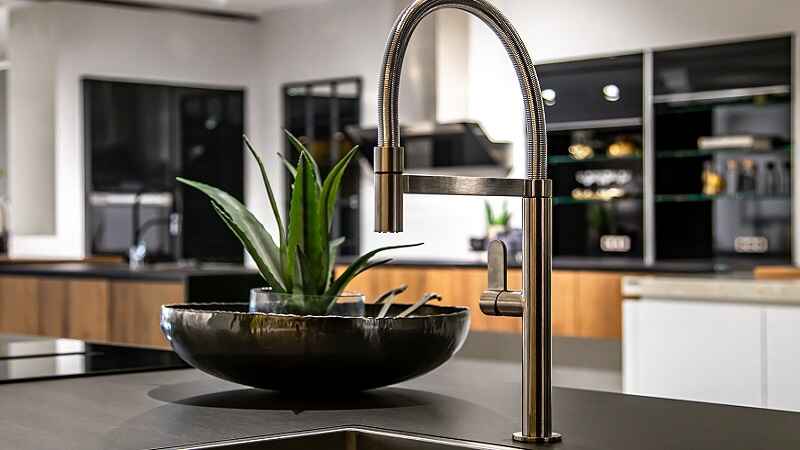Buying made-to-measure furniture is one of the smartest ways to create a home that truly fits your lifestyle, space, and personality. Whether you’re designing a custom sofa, wardrobe, or dining table, bespoke furniture gives you full control over materials, size, and design details. However, many homeowners make common mistakes during the ordering process that lead to wasted money, disappointment, or delivery delays.This article explores the most common mistakes you should avoid when purchasing made-to-measure furniture, along with expert tips to help you make the most of your investment.
1. Not Taking Accurate Measurements
One of the biggest and most costly mistakes when ordering made-to-measure furniture is failing to measure your space correctly. Custom furniture is designed to your exact dimensions — so even a small error can cause major problems.
Why Accurate Measurements Matter
A piece that’s just an inch too wide may not fit through the doorway or could block essential pathways. Similarly, furniture that’s too small might leave awkward gaps that affect the room’s balance.
How to Measure Properly
-
Use a reliable tape measure — avoid guessing or using rough estimates.
-
Measure all dimensions: width, height, and depth.
-
Check access points such as doorways, stairs, and elevators to ensure delivery feasibility.
-
Consider wall skirting and plugs that can affect how the furniture fits against walls.
If possible, ask the manufacturer if they can send a representative to take professional measurements — many companies offer this service.
2. Ignoring the Room’s Layout and Flow
Another major error is not considering how the furniture will fit into the overall room layout. Even if a piece fits physically, it must also make sense functionally and aesthetically.
The Importance of Layout Planning
Every room has a natural flow — pathways for movement, lighting direction, and focal points. Oversized or misplaced furniture can disrupt this flow and make the room feel cluttered.
Tips for Layout Planning
-
Sketch your room’s layout before placing an order.
-
Use room design apps or online planners to visualize proportions.
-
Leave at least 2–3 feet of walking space around key furniture pieces.
-
Think about window light, air vents, and power outlets — your furniture should not block them.
Proper layout planning ensures that your new made-to-measure piece enhances, not overwhelms, your space.
3. Overlooking Material and Fabric Quality
Many people focus on design and size but forget about material durability and fabric quality — leading to early wear and disappointment.
Why Material Choice Matters
The beauty of made-to-measure furniture lies in its longevity. Choosing the wrong materials can compromise this. For example:
-
Cheap MDF may warp over time in humid areas.
-
Light fabrics may stain easily in homes with pets or children.
-
Delicate finishes might scratch quickly.
How to Choose the Right Materials
-
Ask for material samples or swatches before finalizing.
-
Consider your lifestyle needs — durability, ease of cleaning, and resistance to moisture.
-
Check if the materials are eco-friendly or sourced responsibly.
-
Choose timeless materials like solid wood, leather, or high-grade upholstery for long-term use.
Investing in quality materials ensures your furniture not only looks good but lasts for years.

4. Forgetting to Set a Realistic Budget
Many buyers underestimate the true cost of custom-made furniture. While it offers unique advantages, it typically costs more than mass-produced alternatives.
Why Budget Planning Is Crucial
Without a clear budget, it’s easy to overspend or cut corners where you shouldn’t — leading to regret later.
Budgeting Tips
-
Request detailed quotes from multiple vendors.
-
Factor in delivery, installation, and finishing costs.
-
Set aside a 10–15% contingency for unexpected expenses.
-
Prioritize quality over quantity — it’s better to have one perfect piece than several poor-quality ones.
Having a clear financial plan ensures that your project remains both satisfying and affordable.
5. Not Reviewing the Design Details Carefully
A common oversight is not double-checking the final design specifications before production begins.
Why This Step Matters
Once custom furniture is built, changes are expensive or impossible. Any misunderstanding between you and the manufacturer could result in the wrong finish, color, or measurements.
How to Avoid This Mistake
-
Ask for a final 3D render or drawing of your piece.
-
Review every specification: materials, finishes, handles, legs, and hardware.
-
Confirm colors under different lighting — what looks beige under studio light might look yellow in your home.
-
Get everything in writing before confirming production.
Attention to detail at this stage ensures that what you imagine is exactly what you receive.
6. Ignoring the Manufacturer’s Reputation
Not all furniture makers are equal. Choosing the wrong supplier can result in delays, poor craftsmanship, or unresponsive customer service.
Why Reputation Matters
Made-to-measure furniture involves trust. You’re investing both money and time in a piece designed just for you, so you need a reliable partner.
How to Choose the Right Maker
-
Check online reviews, testimonials, and portfolio photos.
-
Ask for references or previous client feedback.
-
Visit the workshop or showroom if possible.
-
Ensure they provide clear communication and written warranties.
A reputable manufacturer will not only deliver quality work but also offer after-sales support.
7. Forgetting About Delivery and Installation Logistics
Even after the furniture is made, many buyers face issues because they didn’t plan for delivery and installation.
Common Delivery Mistakes
-
Not checking door and stairway dimensions before delivery.
-
Failing to schedule delivery when someone is home to supervise.
-
Ignoring whether the piece needs professional assembly.
How to Prepare
-
Measure all access points in advance — especially for large or tall pieces.
-
Ask if the company provides white-glove delivery or installation.
-
Clear the area where the furniture will be placed before delivery day.
-
Inspect the furniture immediately upon arrival for any damages.
Proper planning ensures a smooth delivery and installation process without surprises.
8. Following Trends Blindly
While it’s tempting to follow the latest interior design trends, this can be a mistake when investing in custom furniture that should last years.
Why Trend-Chasing Can Backfire
Trends change quickly. A color or style that’s popular today may feel outdated in just a couple of years.
What to Do Instead
-
Choose timeless designs that reflect your personality.
-
Use trendy elements in easily changeable accents (like cushions or decor).
-
Focus on functionality and comfort over fashion.
Your furniture should complement your lifestyle, not just follow social media trends.
9. Not Considering Future Needs
People often design custom furniture only for their current situation, forgetting how their needs might evolve.
Why Future-Proofing Matters
Your home or family situation may change — you might move, have children, or renovate. Furniture that’s too specialized might not adapt well.
How to Plan Ahead
-
Choose modular or flexible designs that can be adjusted or moved.
-
Select neutral colors and versatile styles that suit different settings.
-
Think about multi-purpose furniture for smaller spaces.
Future-proofing your made-to-measure furniture ensures it remains functional and relevant for years to come.
10. Skipping the Contract or Warranty
A final mistake is not securing a written agreement or warranty from the manufacturer.
Why a Contract Is Essential
Verbal promises can lead to misunderstandings. A written contract protects both parties and outlines what you’re paying for.
What to Include
-
Full specifications of the furniture.
-
Timeline for production and delivery.
-
Payment schedule and refund policy.
-
Warranty details covering workmanship or material defects.
Having a signed agreement ensures accountability and peace of mind throughout the process.
11. Rushing the Process
Made-to-measure furniture requires time, patience, and attention to detail. Rushing through the design or production stage often leads to mistakes.
Why You Shouldn’t Rush
Custom furniture involves multiple stages — design consultation, material selection, measurement, manufacturing, finishing, and delivery. Each stage affects the final result.
What to Do
-
Start the process early, especially before major renovations or moves.
-
Communicate regularly with your furniture maker.
-
Ask for progress updates and photos during production.
Taking time to make informed decisions ensures that you get furniture worth the investment.
12. Neglecting Aftercare and Maintenance
Even the highest-quality furniture requires regular maintenance to preserve its beauty and durability.
Why Maintenance Matters
Over time, dust, sunlight, humidity, and general wear can affect materials and finishes.
How to Maintain Your Furniture
-
Follow the manufacturer’s cleaning and care instructions.
-
Avoid placing furniture near direct sunlight or heating sources.
-
Use protective pads under heavy objects to prevent dents or scratches.
-
Regularly check for loose joints or screws and fix them promptly.
Proper aftercare extends the life of your made-to-measure investment.
Conclusion: Create Furniture That Fits Your Life — Not Just Your Space
Purchasing made-to-measure furniture is an exciting opportunity to design pieces that are truly unique to your home. However, to get the best results, you must approach the process with care, patience, and awareness.
By avoiding the common mistakes discussed — from poor measurement and budgeting to ignoring material quality and future needs — you can ensure your custom furniture journey is smooth and rewarding. Remember, the goal isn’t just to fill a room, but to create functional, beautiful, and lasting furniture that complements your lifestyle perfectly.



